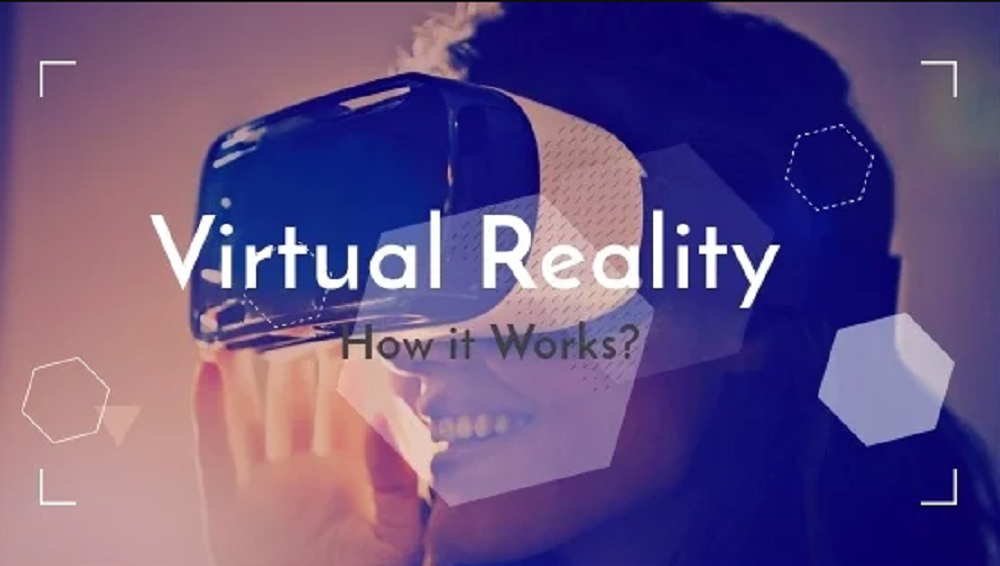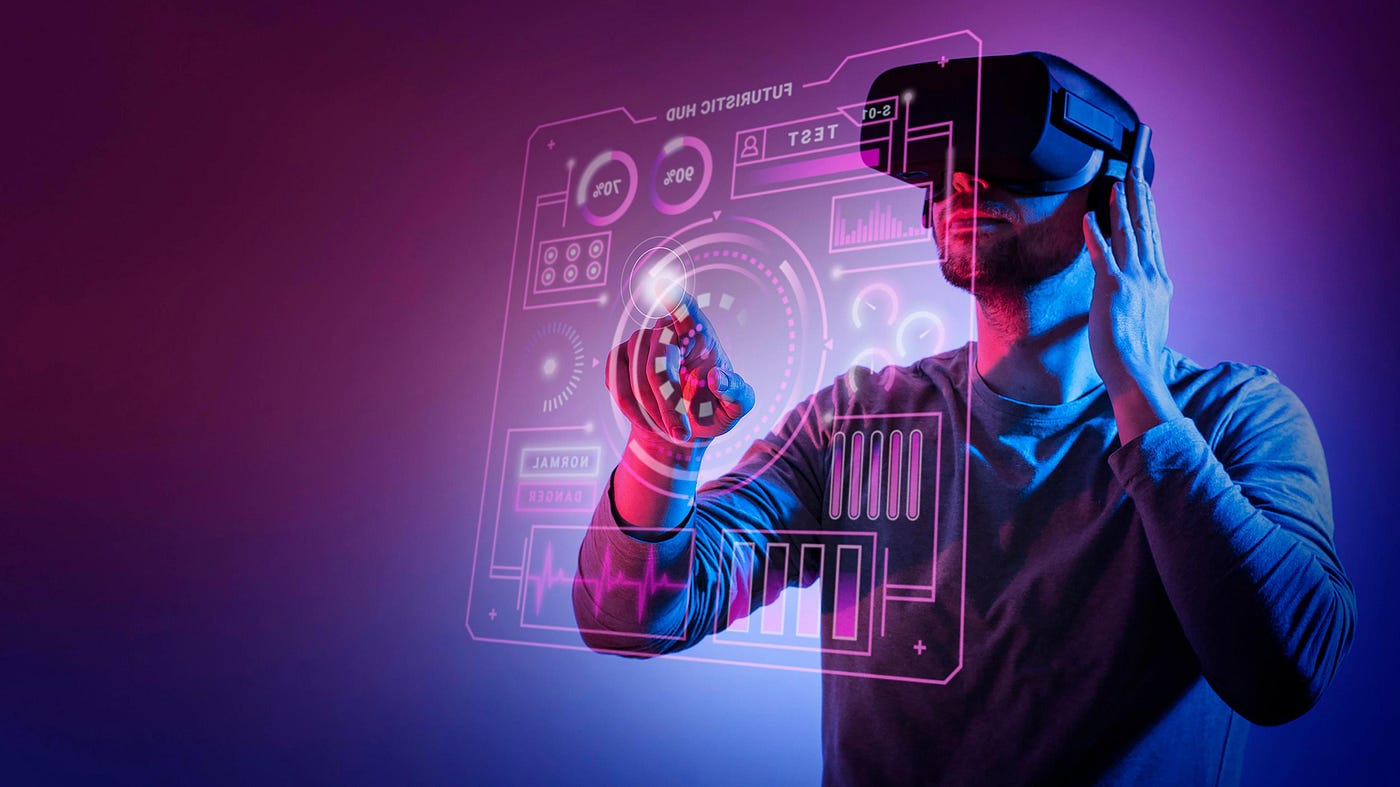In the ever-evolving landscape of technology, Virtual Reality (VR) has emerged as a groundbreaking innovation, reshaping the way we perceive and interact with digital content. As we delve into the immersive realms of VR, we uncover a fascinating fusion of technology and human experience, promising a future where the boundaries between the virtual and the real blur into a seamless, enchanting tapestry.
The Birth of Virtual Reality

Virtual Reality, often abbreviated as VR, is a computer-generated simulation of a three-dimensional environment that users can interact with in a seemingly real or physical way. The concept of VR has its roots in science fiction, with early visions portrayed in literature and films. However, it wasn’t until the late 20th century that technology began catching up with imagination. The first inklings of VR appeared in the 1960s with the invention of the Sensorama by Morton Heilig, a machine that aimed to stimulate all the senses. The concept further evolved through the decades, with significant contributions from pioneers like Ivan Sutherland and his “Sword of Damocles” system in the 1960s and Jaron Lanier coining the term “Virtual Reality” in the 1980s.
The Technological Backbone of VR
At its core, Virtual Reality relies on a sophisticated blend of hardware and software to create an immersive user experience. VR headsets, the most recognizable component, transport users to alternate realities by presenting computer-generated environments through specialized displays. These headsets are equipped with motion sensors, ensuring that the virtual world reacts to the user’s movements in real-time. To enhance the immersive experience, VR often incorporates additional peripherals such as motion controllers, haptic feedback devices, and room-scale tracking systems. These elements contribute to a sense of presence, making users feel as if they are physically present in the virtual space.
How VR Works?
The fundamental components of a Virtual Reality system include a VR headset, motion sensors, and often additional peripherals. The VR headset, worn by the user, features high-resolution displays that present a stereoscopic view of the virtual environment. Motion sensors, such as gyroscopes and accelerometers, track the user’s movements, adjusting the virtual world accordingly.
“Advanced VR uses external sensors for room-scale tracking, letting users move in the physical space, mirroring actions in VR. The result is a sense of presence, where users feel as if they have stepped into an alternate reality.
Types of Virtual Reality
1. Non-Immersive VR: Non-immersive VR refers to experiences that do not fully immerse the user in a virtual environment. This type typically involves basic simulations or 360-degree videos viewed on a standard screen.
2. Semi-Immersive VR: Semi-immersive VR strikes a balance between immersion and real-world interaction. Users engage with VR via projection or simpler headsets, offering immersion without complete isolation in virtual environments.
3. Fully Immersive VR: Fully immersive VR offers the most profound experience, cutting off users from the physical world entirely. High-end VR headsets, such as the Oculus Rift or HTC Vive, fall into this category, providing an all-encompassing virtual experience.
Applications of VR
1. Gaming: VR has made a significant impact on the gaming industry, transporting players into fantastical worlds & providing an unparalleled level of immersion.
2. Education and Training: VR is revolutionizing education & training by offering realistic simulations for fields such as medical training, aviation & military exercises.
3. Healthcare: In healthcare, VR is used for therapies, surgical simulations, and pain management, demonstrating its potential to improve patient outcomes.
4. Architecture and Design: It utilize VR to create virtual walkthroughs of buildings and spaces, enabling clients to experience designs before they are built.
Challenges and Future Prospects of Virtual Reality

While Virtual Reality (VR) has undoubtedly ushered in a new era of immersive experiences, its journey is not without challenges.
1. Hardware Limitations: The quest for more realistic and immersive VR experiences often collides with the limitations of current hardware. High-quality VR demands powerful computing capabilities, leading to the challenge of developing affordable yet advanced devices.
2. Motion Sickness and Health Concerns: Motion sickness remains a significant hurdle in VR adoption. Some users experience discomfort or nausea due to a discrepancy between visual input and physical motion. Addressing these health concerns is crucial for widespread acceptance.
3. Content Quality and Diversity: While VR content is expanding, ensuring a diverse range of high-quality experiences remains a challenge. The industry must focus on developing compelling and varied content to cater to different interests and demographics.
4. Accessibility and Affordability: Despite advancements, VR technology can still be prohibitively expensive for many users. Achieving accessibility and affordability without compromising quality is a balancing act that the industry must address for broader adoption.
5. Social Acceptance and Isolation Concerns: The immersive nature of VR can lead to concerns about social isolation. Balancing VR solitude with real-world social ties remains a persistent challenge, merging digital immersion with physical connection.
Future Prospects and Innovations
1. Advancements in Hardware: The future of VR hinges on continuous advancements in hardware. Lighter, more powerful, and affordable VR headsets with improved resolution and field of view are on the horizon, promising a more seamless and comfortable experience.
2. 5G Integration: The integration of 5G technology will play a pivotal role in enhancing VR experiences. Lower latency and higher data transfer speeds will enable more immersive and responsive VR applications, particularly in areas such as virtual collaboration and gaming.
3. Augmented Reality (AR) and Mixed Reality (MR): The convergence of VR with Augmented Reality (AR) and Mixed Reality (MR) opens up new possibilities. This blend of technologies can create richer and more versatile experiences, impacting fields from education to industrial training.
4. AI and Machine Learning: AI and machine learning algorithms will contribute to more intelligent and responsive VR environments. Personalized experiences, adaptive content generation, and improved user interactions are potential outcomes of AI integration in VR.
5. Healthcare and Therapy Applications: VR’s potential in healthcare is expansive. VR transforms mental health therapy and surgical training, offering profound benefits to the ever-evolving medical landscape.
6. Collaborative VR Experiences: The future holds promising developments in collaborative VR experiences. Virtual meetings, conferences, and teamwork in a shared digital space could redefine how people collaborate across distances.
Conclusion
As we unravel the layers of Virtual Reality, it becomes evident that its impact extends far beyond gaming. From transforming education to enhancing healthcare practices and revolutionizing design processes, VR stands as a technological frontier, continually pushing the boundaries of what is possible in our digitally interconnected world. The journey into virtual realms has just begun, and the possibilities are as vast as the digital landscapes it creates.